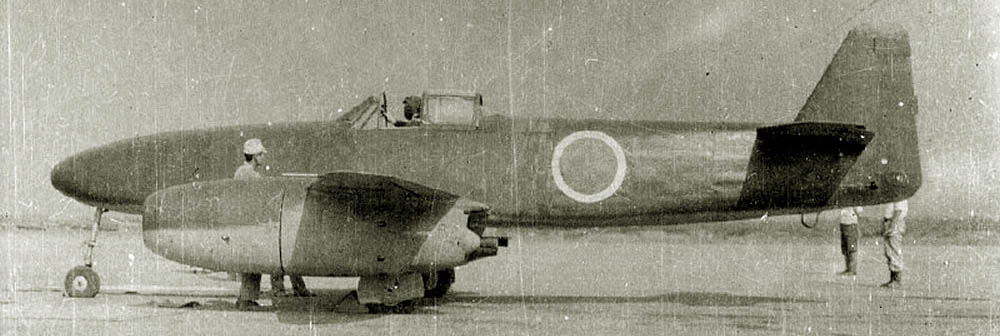Bibliography

- "Japanese Aircraft of the Pacific War " /Rene J Francillion./
- "Japan Warplanes of World War II" /Oleg Doroshkevich/
July 11, 2008
During World War 2 and for years after, it was very common in this country to "put down" Japanese aviation technology (public opinion was no kinder to the Soviets). When I was in high school in Orange County, California (1963-1967), Baka Bombs and their pilots were the subject of crude, schoolboy jokes.
My Dad, by conspicuous contrast, had respect for the men whom he had fought in the Pacific War. His ship, the light cruiser Birmingham (Cleveland Class, CL-62) was hit by an "Oscar" suicide plane on May 12, 1945, during the Battle of Okinawa. The "scuttlebutt" was that an unidentified spotter on the Birmingham had mistaken the incoming Ki.43 for a Douglas Dauntless (SBD), which enabled the pilot to penetrate the AA. It also didn't help that the pilot had come in at "zero feet," flying due East over Okinawa, to where the fleet was in "Buckner Bay." The "ground clutter" from Okinawa's hills would have concealed the Oscar from radar on the ships there until it was too close.
At any rate, this memo was written in November, 1945, shortly after the American Occupation of the Japanese Home Islands had begun.
I do not believe that the "Baika," "Tsurugi" or "Kikka" appeared in any of the Allied aircraft recognition manuals. I am not sure about the "Baka Bomb" or "Ohka," but it was nonetheless widely known to sailors like my Dad. On its combat debut off of Kyushu on March 21, 1945, a navy aviator saw the "Betty" he was targetting jettison a relatively small, winged object and he excitedly yelled into his mike, "Hey, that thing has a 'papoose'!...," a cowboy's term for a swaddled infant, secured in a frame to an American Indian/Native American mother's back. I've seen gun camera footage of this engagement. It is both exhilerating and tragic...
---
Steve Lange
July 11, 2008
I received a copy of the "Powerplant Memo No. 18" as hard copy from the National Air & Space Museum (NASM) associated with the Smithsonian in Washington DC last year, in response to an inquiry which I had sent them several weeks before. As I review this, it occurs to me that I might do well to include some comments with it.
To start with, these documents are all in the "format" used by Microsoft Word 2002. This version of Microsoft Word is widely used in the US and it can be read by nearly all of the current generation word processing programs, including "Open Office," which is the FOSS equivalent to the Microsoft Office Suite, which includes Microsoft Word.
Powerplant Memo No. 18 November 1945.doc
PM-18 Engines Table One.doc
---
Steve Lange
July 27, 2008
The Kikka was one of three Japanese designs which were to have been powered by the Ishikawajima-Harima Ne-20. The Kikka has sometimes been reported as having been assigned the IJN "short designation" J9Y1, but I am far from sure of this. It was designed as a "special attack" plane and, in that form, might not have had one. The proposed fighter version with two Ne-130s and armament of two 30-mm cannon was an after thought and I doubt that the design team (Nakajima or Yokosuka?) made much progress on it beyond the initial proposal.
Two versions of the MXY8 suicide bomb called "Ohka" by the Japs with the Ne-20 engine were proposed--the model 33 and the model 43. The model 33 was to have been carried by a G8N1 "Renzan" mothership, while the model 43 was to have been catapult launched from caves. Given that the prospects for any Renzan production were, by August, 1945, very poor, the model 43 is of more interest. Its range would have been limited, but even the Ohka 11 was hard to shoot down--once it had left its own G4M2-J mothership.
The first two J7W1 prototypes were built and powered by a Mitsubishi MK9D radial rated at 2,180 hp. However, the next two prototypes would have powered by a single Ne-20 and so would production J7W2s. Given that the Ne-20 was only rated at 1047 lbst and would not have been notably reliable, I am not sure if it would have a satisfactory fighter. Larger jet aircraft with two engines (Gloster Meteor, MiG-9 "Farmer" or Me-262A) were a better bet.
Incidentally, I am not sure whether or not Kyushu Aircraft had solid plans to build the J7W1 as a production warplane.
---
Steve Lange
|







